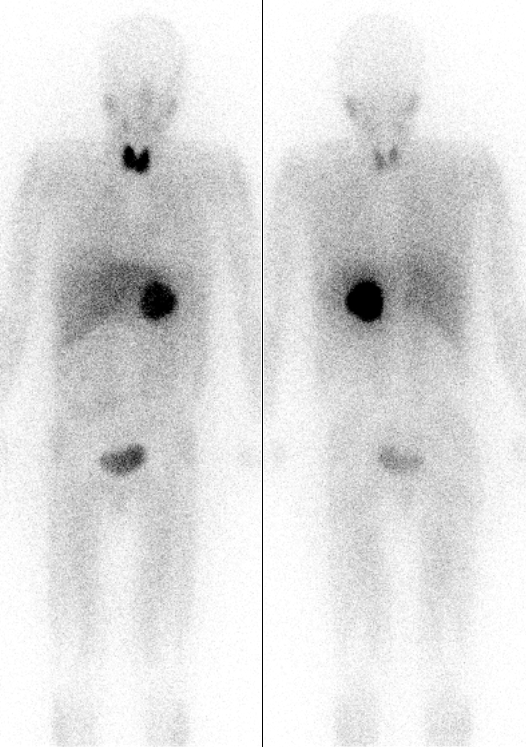|
ATC Code V03
V03A All other therapeutic products V03AB Antidotes :V03AB01 Ipecacuanha :V03AB02 Nalorphine :V03AB03 Edetates :V03AB04 Pralidoxime :V03AB05 Prednisolone and promethazine :V03AB06 Thiosulfate :V03AB08 Sodium nitrite :V03AB09 Dimercaprol :V03AB13 Obidoxime :V03AB14 Protamine :V03AB15 Naloxone :V03AB16 Ethanol :V03AB17 Methylthioninium chloride :V03AB18 Potassium permanganate :V03AB19 Physostigmine :V03AB20 Copper sulfate :V03AB21 Potassium iodide :V03AB22 Amyl nitrite :V03AB23 Acetylcysteine :V03AB24 Digitalis antitoxin :V03AB25 Flumazenil :V03AB26 Methionine :V03AB27 4-dimethylaminophenol :V03AB29 Cholinesterase :V03AB31 Prussian blue :V03AB32 Glutathione :V03AB33 Hydroxocobalamin :V03AB34 Fomepizole :V03AB35 Sugammadex :V03AB36 Phentolamine :V03AB37 Idarucizumab :V03AB38 Andexanet alfa :QV03AB90 Atipamezole :QV03AB91 Sarmazenil :QV03AB92 Diprenorfin :QV03AB93 Yohimbine :QV03AB94 Tolazoline :QV03AB95 Apomorphine :QV03AB96 Ropinirole V03AC Iron chelating agents :V03AC01 Deferox ... [...More Info...] [...Related Items...] OR: [Wikipedia] [Google] [Baidu] |
Antidote
An antidote is a substance that can counteract a form of poisoning. The term ultimately derives from the Greek term φάρμακον ἀντίδοτον ''(pharmakon) antidoton'', "(medicine) given as a remedy". Antidotes for anticoagulants are sometimes referred to as reversal agents. The antidotes for some particular toxins are manufactured by injecting the toxin into an animal in small doses and extracting the resulting antibodies from the host animals' blood. This results in an antivenom that can be used to counteract venom produced by certain species of snakes, spiders, and other venomous animals. Some animal venoms, especially those produced by arthropods (such as certain spiders, scorpions, and bees) are only potentially lethal when they provoke allergic reactions and induce anaphylactic shock; as such, there is no "antidote" for these venoms; however anaphylactic shock can be treated (e.g. with epinephrine). Some other toxins have no known antidote. For example, the pois ... [...More Info...] [...Related Items...] OR: [Wikipedia] [Google] [Baidu] |
Potassium Iodide
Potassium iodide is a chemical compound, medication, and dietary supplement. It is a medication used for treating hyperthyroidism, in radiation emergencies, and for protecting the thyroid gland when certain types of radiopharmaceuticals are used. In the third world it is also used for treating skin sporotrichosis and phycomycosis. It is a supplement used by people with low dietary intake of iodine. It is administered orally. Common side effects include vomiting, diarrhea, abdominal pain, rash, and swelling of the salivary glands. Other side effects include allergic reactions, headache, goitre, and depression. While use during pregnancy may harm the baby, its use is still recommended in radiation emergencies. Potassium iodide has the chemical formula K I. Commercially it is made by mixing potassium hydroxide with iodine. Potassium iodide has been used medically since at least 1820. It is on the World Health Organization's List of Essential Medicines. Potassium iodide is av ... [...More Info...] [...Related Items...] OR: [Wikipedia] [Google] [Baidu] |
Phentolamine
Phentolamine, sold under the brand name Regitine among others, is a reversible nonselective α-adrenergic antagonist. Mechanism Its primary action is vasodilation due to α1 blockade. Non-selective α-blockers can cause a much more pronounced reflex tachycardia than the selective α1 blockers. Like the selective α1 blockers, phentolamine causes a relaxation of systemic vasculature, leading to hypotension. This hypotension is sensed by the baroreceptor reflex, which results in increased sympathetic nerve firing on the heart, releasing norepinephrine. In response, the β1 adrenergic receptors on the heart increase their rate, contractility, and dromotropy, which help to offset the decrease in systemic blood pressure. Unlike the α1 selective blockers, phentolamine also inhibits the α2 receptors, which function predominantly as presynaptic negative feedback for norepinephrine release. By abolishing this negative feedback phentolamine leads to even less regulated norepinephrine ... [...More Info...] [...Related Items...] OR: [Wikipedia] [Google] [Baidu] |
Sugammadex
Sugammadex, sold under the brand name Bridion, is a medication for the reversal of neuromuscular blockade induced by rocuronium and vecuronium in general anaesthesia. It is the first selective relaxant binding agent (SRBA). It is marketed by Merck. The most common side effects include cough, airway problems due to the anaesthesia wearing off, reduced blood pressure and other complications such as changes in heart rate. Text was copied from this source which is © European Medicines Agency. Reproduction is authorized provided the source is acknowledged. Medical uses Sugammadex is indicated for the reversal of neuromuscular blockade induced by rocuronium or vecuronium. Pharmacology Pharmacodynamics Sugammadex is a modified γ-cyclodextrin, with a lipophilic core and a hydrophilic periphery. This gamma cyclodextrin has been modified from its natural state by placing eight carboxyl thio ether groups at the sixth carbon positions. These extensions extend the cavity size allowing gr ... [...More Info...] [...Related Items...] OR: [Wikipedia] [Google] [Baidu] |
Fomepizole
Fomepizole, also known as 4-methylpyrazole, is a medication used to treat methanol poisoning, methanol and ethylene glycol poisoning. It may be used alone or together with hemodialysis. It is given by intravenous, injection into a vein. Common side effects include headache, nausea, sleepiness, and unsteadiness. It is unclear if use during pregnancy is safe for the baby. Fomepizole works by blocking the enzyme that converts methanol and ethylene glycol to their toxic breakdown products. Fomepizole was approved for medical use in the United States in 1997. It is on the WHO Model List of Essential Medicines, World Health Organization's List of Essential Medicines. Medical use Fomepizole is used to treat ethylene glycol and methanol poisoning. It acts to inhibit the breakdown of these toxins into their active toxic metabolites. Fomepizole is a competitive inhibition, competitive inhibitor of the enzyme alcohol dehydrogenase, found in the liver. This enzyme plays a key role in the ... [...More Info...] [...Related Items...] OR: [Wikipedia] [Google] [Baidu] |
Hydroxocobalamin
Hydroxocobalamin, also known as vitamin B12a and hydroxycobalamin, is a vitamin found in food and used as a dietary supplement. As a supplement it is used to treat vitamin B12 deficiency including pernicious anemia. Other uses include treatment for cyanide poisoning, Leber's optic atrophy, and toxic amblyopia. It is given by injection into a muscle or vein. Side effects are generally few. They may include diarrhea, low blood potassium, allergic reactions, and high blood pressure. Normal doses are considered safe in pregnancy. Hydroxocobalamin is the natural form of vitamin B12 and a member of the cobalamin family of compounds. Hydroxocobalamin, or another form of vitamin B12, are required for the body to make DNA. Hydroxocobalamin was first isolated in 1949. It is on the World Health Organization's List of Essential Medicines. Hydroxocobalamin is available as a generic medication. Commercially it is made using one of a number of types of bacteria. Medical uses Vitamin B12 ... [...More Info...] [...Related Items...] OR: [Wikipedia] [Google] [Baidu] |
Glutathione
Glutathione (GSH, ) is an antioxidant in plants, animals, fungi, and some bacteria and archaea. Glutathione is capable of preventing damage to important cellular components caused by sources such as reactive oxygen species, free radicals, peroxides, lipid peroxides, and heavy metals. It is a tripeptide with a gamma peptide linkage between the carboxyl group of the glutamate side chain and cysteine. The carboxyl group of the cysteine residue is attached by normal peptide linkage to glycine. Biosynthesis and occurrence Glutathione biosynthesis involves two adenosine triphosphate-dependent steps: *First, γ-glutamylcysteine is synthesized from L- glutamate and cysteine. This conversion requires the enzyme glutamate–cysteine ligase (GCL, glutamate cysteine synthase). This reaction is the rate-limiting step in glutathione synthesis. *Second, glycine is added to the C-terminal of γ-glutamylcysteine. This condensation is catalyzed by glutathione synthetase. While all animal ... [...More Info...] [...Related Items...] OR: [Wikipedia] [Google] [Baidu] |
Prussian Blue
Prussian blue (also known as Berlin blue, Brandenburg blue or, in painting, Parisian or Paris blue) is a dark blue pigment produced by oxidation of ferrous ferrocyanide salts. It has the chemical formula Fe CN)">Cyanide.html" ;"title="e(Cyanide">CN) Turnbull's blue is chemically identical, but is made from different reagents, and its slightly different color stems from different impurities and particle sizes. Prussian blue was the first modern synthetic pigment. It is prepared as a very fine colloidal dispersion, because the compound is not soluble in water. It contains variable amounts of other ions and its appearance depends sensitively on the size of the colloidal particles. The pigment is used in paints, and it is the traditional "blue" in blueprints, and became prominent in 19th-century () Japanese woodblock prints. In medicine, orally administered Prussian blue is used as an antidote for certain kinds of heavy metal poisoning, e.g., by thallium(I) and radioactive is ... [...More Info...] [...Related Items...] OR: [Wikipedia] [Google] [Baidu] |
Cholinesterase
The enzyme cholinesterase (EC 3.1.1.8, choline esterase; systematic name acylcholine acylhydrolase) catalyses the hydrolysis of choline-based esters: : an acylcholine + H2O = choline + a carboxylate Several of these serve as neurotransmitters. Thus, it is either of two enzymes that catalyze the hydrolysis of these cholinergic neurotransmitters, such as breaking acetylcholine into choline and acetic acid. These reactions are necessary to allow a cholinergic neuron to return to its resting state after activation. For example, in muscle contraction, acetylcholine at a neuromuscular junction triggers a contraction; but for the muscle to relax afterward, rather than remaining locked in a tense state, the acetylcholine must be broken down by a choline esterase. The main type for that purpose is acetylcholinesterase (also called choline esterase I or erythrocyte cholinesterase); it is found mainly in chemical synapses and red blood cell membranes. The other type is butyrylcholinestera ... [...More Info...] [...Related Items...] OR: [Wikipedia] [Google] [Baidu] |
Methionine
Methionine (symbol Met or M) () is an essential amino acid in humans. As the precursor of other amino acids such as cysteine and taurine, versatile compounds such as SAM-e, and the important antioxidant glutathione, methionine plays a critical role in the metabolism and health of many species, including humans. It is encoded by the codon AUG. Methionine is also an important part of angiogenesis, the growth of new blood vessels. Supplementation may benefit those suffering from copper poisoning. Overconsumption of methionine, the methyl group donor in DNA methylation, is related to cancer growth in a number of studies. Methionine was first isolated in 1921 by John Howard Mueller. Biochemical details Methionine (abbreviated as Met or M; encoded by the codon AUG) is an α-amino acid that is used in the biosynthesis of proteins. It contains a carboxyl group (which is in the deprotonated −COO− form under biological pH conditions), an amino group (which is in the protonated fo ... [...More Info...] [...Related Items...] OR: [Wikipedia] [Google] [Baidu] |
Flumazenil
Flumazenil (also known as flumazepil, code name Ro 15-1788) is a selective GABAA receptor antagonist administered via injection, otic insertion, or intranasally. Therapeutically, it acts as both an antagonist and antidote to benzodiazepines (particularly in cases of overdose), through competitive inhibition. It was first characterized in 1981, and was first marketed in 1987 by Hoffmann-La Roche under the trade name Anexate. However, it did not receive FDA approval until December 20, 1991. The developer lost its exclusive patent rights in 2008; so at present, generic formulations of this drug are available. Intravenous flumazenil is primarily used to treat benzodiazepine overdoses and to help reverse anesthesia. Administration of flumazenil by sublingual lozenge and topical cream has also been tested. Medical uses Flumazenil benefits patients who become excessively drowsy after use of benzodiazepines for either diagnostic or therapeutic procedures. The drug has been used as ... [...More Info...] [...Related Items...] OR: [Wikipedia] [Google] [Baidu] |


